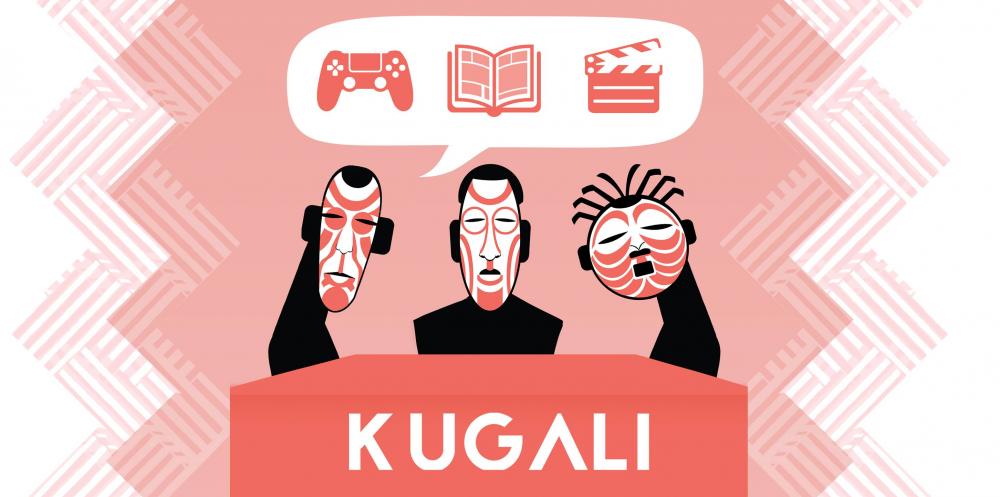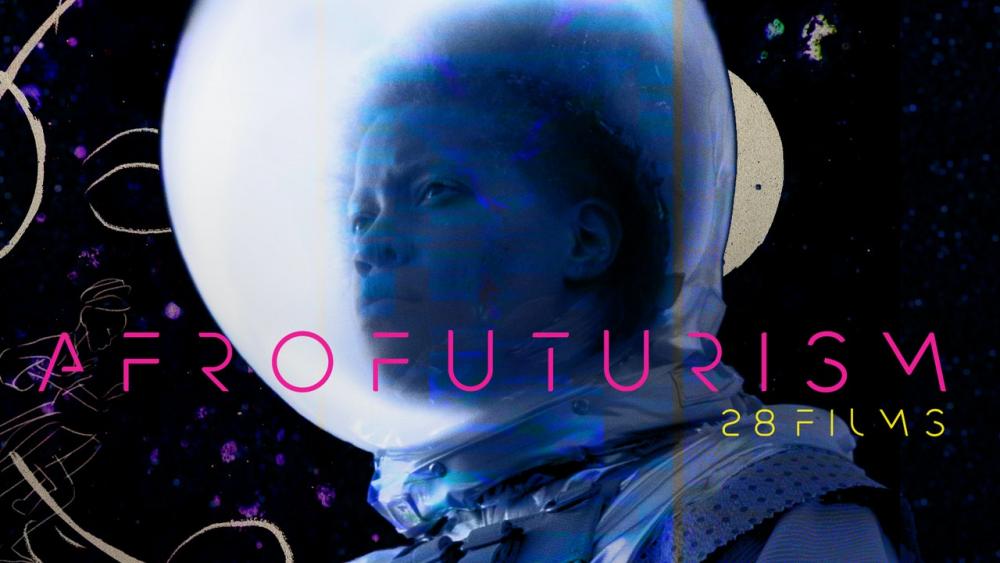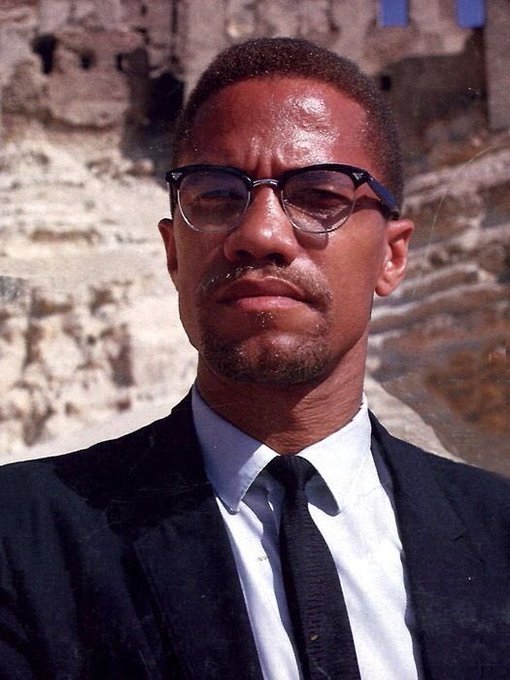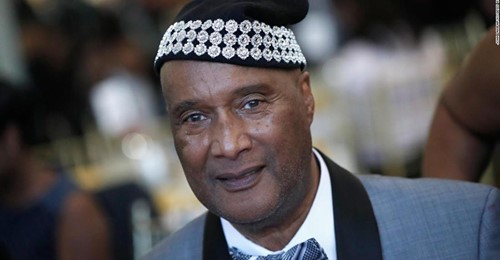-
Posts
2,402 -
Joined
-
Last visited
-
Days Won
91
Content Type
Profiles
Forums
Blogs
Events
Status Updates posted by richardmurray
-
Well... it is another Friday, another day to love, to Oxum, Oshun, Freya, or Venus, another day to Kizomba!
Love is a thing bred from fun and Yäir Fatal side Chalianna L. clearly are having fun, undeterred from any misstep or mistime. I find that blissfully common. We each dance so little in a couple we are bound to have many misses in the early days, keep smiling, keep dancing -
Discover Hidden Narratives: The largest collection of African Comics in the World!
The Kugali Comic Club grants you access to the largest collection of African comics in the world, as well as new chapters of ongoing comics every other day. For this first season, you get a new chapter of Versus every Monday, new chapter of Olwatuuka every Wednesday and new chapter of Nani every Friday. Three issues of Mill City's Finest will round up season one in Septmeber. Season two kicks off after a two week break, so there's a lot more content to come!
https://kugali.com/pages/free-comics
https://kugali.com/pages/read-free-comics
https://kugali.com/pages/read-free-comics-3
Video -
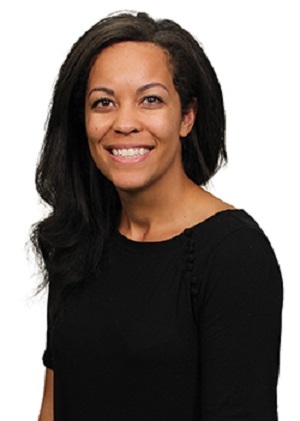
This week on the podcast we are joined by Lateefah Zawistowski to discuss all things OverDrive. As an account manager for OverDrive, Lateefah gives us the inside look at how OverDrive works, how authors can add and market their books on OverDrive, and how libraries utilize the service. She also shares some advice on pricing your books for libraries, what trends she’s currently seeing in library sales, and she discusses the impact of the pandemic on libraries.
- Lateefah tells us about her role as account manager at OverDrive and why she believes publishers and indie authors alike should consider opting their books into OverDrive
- She discusses the borrowing habits of readers and how they change based on the genre, and she tells us why the library is such a great tool for discovery, especially for backlist and midlist titles
- Lateefah explains how libraries purchase books from OverDrive, the multiple purchasing models available to authors and libraries, what time of year libraries are most likely to be purchasing books, and she gives some advice on how to price your eBook for libraries
- She gives us her predictictions for library trends in 2021 and beyond, and explains why the surge of new library users at the beginning of the pandemic, while great, isn’t necessarily enough to support local libraries
- Lateefah discusses OverDrive promotions and she explains how merchandising is essential to discoverability on OverDrive
- She explains the global reach of OverDrive and how many different markets they’re available to, from public libraries to education to corporations, and she discusses the different language markets outside of English Language books
- Lateefah talks to us about current trends in library sales, what books have sold the best during the pandemic, and she explains why genre fiction is having a big moment right now
LISTEN TO THE INTERVIEW OR READ THE TRANSCRIPT USING THE ARTICLE BELOW
KWL - 245 - Optimizing OverDrive with Lateefah Zawistowski - Kobo Writing Life

Happy Audiobook Month! What better way to celebrate than by uploading your audiobooks directly to Kobo! Especially because it’s incredibly easy to do.
How easy, you ask? You can upload your audiobook in only ten steps (and one of those steps is signing into your account)! Here’s how:
Log into your Kobo Writing Life account here: https://www.kobo.com/writinglife
Select the Audiobooks tab on your dashboard. Don’t see the audiobook tab? Send us an email at writinglife@kobo.com and we can activate it for you!
Click “Create new Audiobook”. Once on the audiobook uploading page, you can start inputting your audiobook information. You will first be asked to describe your audiobook. This includes: the title and subtitle (remember to only include text that appears on your book’s cover!), the series name and number if your book is part of a series, the contributors including your narrator, your synopsis, publisher name and imprint, your publication date and release date, your ISBN (this must be a unique ISBN and cannot be the same as your eBook or print book!), and finally the language of your audiobook and whether it’s abridged or unabridged.
You will then be required to enter the categories for your title. These categories will determine how your audiobook is labelled and categorized in the Kobo Store. We recommend selecting three categories for each book to ensure that customers who are browsing through our store have a better chance of finding your titles.
Next, you will need to upload your cover image. We accept cover images in .png, .jpg and .jpeg file formats. We recommend the minimum size of audiobook cover images be at least 600px by 600px. Covers for audiobooks should be square; if they are not, they will be automatically adjusted. Please note: cover images cannot exceed 5 MB in size.
Now you are ready to upload your audio files! You can drop files directly from your computer into the Upload Audio Files section or select the folder on your desktop that contains your audiobook files. We only accept audio files in .mp3 and m4a formats. An individual file cannot exceed 200 MB in size and all files combined cannot exceed 2 GB in size. Please wait for your audio files to be completely uploaded before moving to the next step. You will know when files have been successfully uploaded when the “Listen to confirm content” prompt appears .
Once your files have been completely uploaded, you can then start to make your Table of Contents. The Table of Contents organizes your audiobook to make sure it is in reading order. You can move the files up and down to ensure they are in the correct order and provide the chapter title for the file under the “Name of Content” section. Please note: What you list in the “Name of content” section will appear in the Table of Contents customers use to navigate your audiobook on our apps.
You will then be asked to provide the geographic rights for the title. Please select the countries you own the rights to sell your title in.
The final step is to set the price for your title. Please input the price of your title in all the available currencies. Audiobooks pricing is slightly more complicated than eBooks. The royalty percentage thresholds are as follows:35% royalties for audiobooks priced $2.99 or lower
45% royalties for audiobooks priced over $2.99Please note: If a customer redeems a free trial token for your audiobook, the royalty amount will be 0. If they redeem using a paid token, the royalty amount will be 32%. Otherwise, the royalty amount will be the values displayed above.
Once all steps have been completed you can then select publish! If you have missed any steps, you will receive an error message. Otherwise, your audiobook is in good hands and has been sent for processing. It will soon be available on the Kobo store in 24-72 hours.
Be sure to let us know when you’re publishing new audiobooks so we can add them to our audio new release calendar! < https://docs.google.com/forms/d/e/1FAIpQLSdy1Hzav1WCotnQqd9zOmrUYj5OMcQcqQ-YJl_erliV6apuYQ/viewform >- Show previous comments 1 more
-

@Mel Hopkins you mean overdrive or kobo for audio?
-
.thumb.jpg.afc88dfee9cd2927de0c440601caac13.jpg)
Overdrive - but it would apply to any service. I've noticed that many independent authors and even some traditionally published authors hand over their intellectual property to vendors.
-
-
 1
1
-
- Report
-

good point @Mel Hopkins this is why you need to accept what you will use where. I think artist need to know where certain content they create is going or at least accept where it will go. if you want to be safe, make content to be shared. I know quite a few artists who do that in various fields: drawing/writing/photography
-
-
 1
1
-
- Report
-
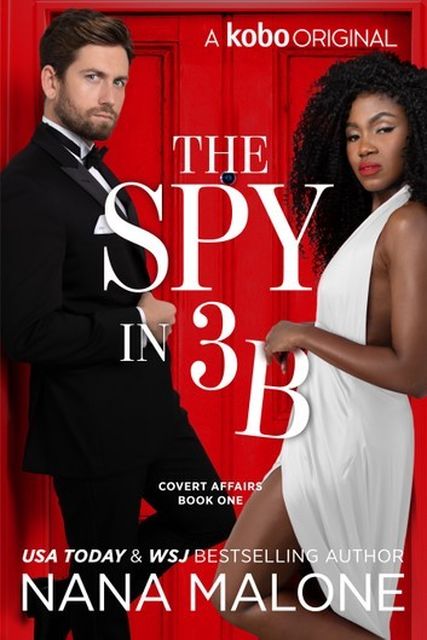
Nana Malone is the bestselling author of sexy, feel-good, action-packed romance novels.
The Spy in 3B is the first book in the Covert Affairs Duet.
What are you reading now?I’m reading a #brownnipplechallenge book called The Road to Rose Bend by Naima Simone. It’s a small town romance, which I don’t normally love — but it’s really good. I really like Naima’s writing; she’s such a seasoned writer and her writing has such an effortless flow to it. [More on the #brownnipplechallenge at the end of this interview – Ed.]
I partnered with Lyric Audiobooks to do Audio in Color where we created a grant program to help writers of color do their first audiobook. And so I’m reading through submissions for that to see what’s going to work well in audio.
Have you found that turning your own books into audiobooks has influenced how you write?
I realized a while ago that I’m basically writing television. My editors are always asking for more emotion, more description, more on the page. But my strong suit has always been banter, as if the characters are on screen. So I’m always ready for audio.
My books that haven’t worked in audio have been the ones where I tried to do more exposition and wrote less naturally to my strengths. I think it’s important for a writer to evolve, but you’ve also got to understand yourself better so you can sink into who you are. I’ve tried to write straight rom-coms, but I just always need a bad guy — someone has to get their comeuppance. So that rom-com with an action twist is really where I like to play, and that’s The Spy in 3B.
It’s almost like a professional athlete who has to decide early on what their position is and play that, and not worry about being bad at playing the other positions.
I was a track and field athlete, and there’s this thing where you have your strength but you ignore it because it doesn’t fit what your idea of your strengths are. For years I was trying to be a short-distance sprinter, and I had a track coach who wanted me to run the half-mile. But I fought it because it wasn’t my own idea of me — and then he made me run it, and I got it. It tapped into a strength I had but didn’t acknowledge.
Series writers are told to “write the same — but different.” And that was me writing the Royals books for three years. I had to figure out what to do next, so it was Royal bodyguards, which kept the same tone. Then Royal cousins, and on and on, all in the world I love which is heists and capers, action-adventure.
“I don’t go to bed until the words are done. If it’s six scenes for the day, then that’s what I need to do, and if I’m smart I’ll get a couple done early.”
Did the pandemic change how you write?
Not so much the pandemic, but when I’m writing I can’t be reading anything at the same time. I’ll be working on a “best friends to lovers” plot, and suddenly I’m finding the guy is turning into a total jerk. It’s because of what I’ve been reading. So when I’m done with edits I’ll gorge on three books before I dive back into it. I have a Christina Lauren on my list that I really want to get to. Sierra Simone has a series that went Priest and Sinner, and I can’t wait for Saint. She’s a friend so I know I’ve got an advance copy for that coming — and that’s the last thing I’ll inhale before I go back into my writing cave for the next Covert Affairs book The Assassin in 3F.
You’re such a busy writer — how did the pandemic impact your focus? I’ve heard from other writers that it was a strange kind of freedom to have no social interactions to turn down when writing needed to get done.
In my case, I went into the pandemic with a heavy schedule and I don’t let myself miss a deadline. I had to find a way.
I used to wake up at 5:30 every morning when my daughter was very young just to get some words in before going on to my full-time job, and sometimes that would mean feeding a baby and typing one-handed. I’ve switched to dictation due to a shoulder injury, so then it became dictation and feeding. I learned I can work in 15-minute chunks and get 500 words out of each chunk. And by building up these 15-minute chunks through the day, I could get about 3000 words, which for me is about a chapter and a half.
So when the pandemic hit, I took that focus and adapted it. When the weather was warm I’d just walk in the backyard and dictate and knock out chapters. But then with remote school, and moving my daughter from her room into the main space of the house, my daughter’s French lessons and Spanish lessons started becoming my French and Spanish lessons, so we had to switch it up again. I became nocturnal and worked after my daughter and husband had gone to bed. I don’t go to bed until the words are done. If it’s six scenes for the day, then that’s what I need to do, and if I’m smart I’ll get a couple done early. I’ve learned my brain is better in the morning.
But you’ve also got to give yourself grace. I moved one deadline and I still think about it. [laughs]
My daughter’s back at school a couple days a week, so I’m adjusting again.
Many authors are driven to write because of the stories they want to read. But you went a step further into how those stories are presented to readers before they’re read — by posing as a model on covers for other writers. How did that come about?
I’ve been published since 2010 and in the beginning, let’s just say I was really naive, and I let my publisher define who I was as a writer. Like with my first book, which was an adoption story about a Black woman who raises her best friend’s kid who’s white, and they marketed me as a “multicultural author” and I figured at the time, okay I guess that’s what I am.
I knew I wanted to write books about brown women just living their happy Black lives — and it wasn’t a huge deal that they were deserving of happily ever afters. I took that on as a mission. Because when I started there was a lot of chick-lit with not a speck of brown to be seen; even in my favourite chick-lit books, there aren’t even secondary characters of colour.
So I remember they just put the hand of this woman on the book about the adoption. And I didn’t think about why they would have done that. Only when I started self-publishing and taking responsibility for my own covers, that’s when I understood the pickings were slim.
“It wasn’t enough for me just to depict a Black woman on the covers — I wanted to show a dark-skinned Black woman.”
At the same time, I was pursuing traditional publishing deals and hearing from agents and publishers that people aren’t really looking for stories with Black women in them. But I was stubborn about my mission and staying authentic to myself. So I started playing with object covers. I also realized that if I’m writing an interracial story, I can put a white guy on the cover, and I can leave it until page 100 that the reader gets a description of a brown nipple.
But last summer, with the racial uprising and sea change that happened, Nina, my publicist, told me I need to go back to my older books and put brown-skinned women on the covers. And I wanted to, because it’s important for little girls like my daughter to see women who look like her who are deserving as anyone of love without complication. But I needed a push. I mean, I knew the reality of the available stock photos.
It wasn’t enough for me just to depict a Black woman on the covers — I wanted to show a dark-skinned Black woman. Look, in Ghana where my family is from I’m a medium brown. But in the US, I’m considered dark-skinned. At the same time, in the stock photos there are some mixed-race girls available, but I knew my books and I knew my heroines were dark-skinned. But also, these are books about royalty, so she’s also going to need to be in a ball gown, jewels, a crown. And then to add a male model to that mix — I couldn’t find anything.
But I knew a photographer whose work I’d bought for other covers, Wander Aguiar, and for 10 years he’d been saying, “You’re beautiful. I want to shoot you.” And I didn’t know what that even meant as a writer — I was content to just write my books. But I was in my Year of Yes, and thanks to Shonda Rhimes this was just another crazy thing I was going to do.
When one of the first photos went out through the Romancelandia newsletter, my phone blew up with messages from Black authors saying thank you, but also white authors who let me know they’d just bought the image for their own use!
I thought I was done. There was a problem and Wander and I made our contribution to solving it.
But then you started posing for covers for your own books. Can you tell me about how your thinking evolved here?
It was the same thing: I was looking for an image and I couldn’t find it, and it was extra-challenging because I was going to need a set of four for the series. So again, I was talking to my publicist and she said, “You’re going to have to do it yourself.”
It was terrifying. It’s one thing if someone doesn’t like the cover on someone else’s book. But to have my image on my books, with my readers judging them… But I did it and the books are selling. The audience had changed. Many more readers are ready to read stories about heroines who don’t look like them.
“I’m old! Modelling requires a significant amount of work to fit into things and look a certain way. I want to eat oreos!”
If suddenly there were many wonderful stock images featuring Black models you could use for your covers, would you hang up the ballgown?
I don’t think we’re going to see that plethora of options in my modelling lifetime. Though I really don’t feel a need to be on my own covers, I’m not opposed to it. When we were talking about cover ideas for The Spy in 3B, we were talking about maybe illustrated, but that’s not something on my other covers and I wanted readers to be able to make the connection, and so when the idea came up to have me on the cover, my first thought was, “Oh no, kale again?” [laughs]
I’m old! Modelling requires a significant amount of work to fit into things and look a certain way. I want to eat oreos!
Having done it before made it easier to say yes. My only concern was whether my face on another cover would be too much, but then I’m also learning The Subtle Art of Not Giving a F***.
You’re a champion for diversity in romance beyond the world of Nana Malone and covers featuring you — can you tell me about the #brownnipplechallenge?
With the #brownnipplechallenge I wanted to support other authors of colour — however they’re publishing, whether traditionally or through a self-publishing route — to put money in their pockets which will give them more access.
I come from a position of privilege, as the child of immigrants. I can get on a plane tomorrow and be in my grandfather’s village. Being Black in America and being able to trace that lineage, that’s a privilege. My father went to an Ivy League school, my mother’s a nurse, and that’s another layer of privilege. I do face racism as any other Black person does in this country, but it’s not the same burden that my brothers and sisters carry who are descended from enslaved people.
Last summer I wanted to take up a form of protest that feels safe for my family and feels authentic and sustainable for me. At the same time, people were sharing information about money they made in this business in #publishingpaidme and I was seeing the disparity between writers of colour, and my non-melanated friends — and I’m really happy for my friends and their success, but something had to change.
“I want people to know in these books there’s kissing, there’s happily-ever-after, there’s sexy-times. It’s not vegetables. It’s cake.”
So the #brownnipplechallenge is basically a book club. A non-performative one. I didn’t want to help anyone stock a “diverse bookshelf” of unread books. There’s this idea that reading books by these authors is like eating your vegetables. And I want people to know in these books there’s kissing, there’s happily-ever-after, there’s sexy-times. It’s not vegetables. It’s cake.
You will show up to these book club meetings having read the book, and we’re going to talk to the author, and it will make it more personal and real. It’ll be fun!
I’m lucky. I’ve had difficulty, but I made it. And there’s only a handful of us at this point. When people name Black romance authors, it’s always the same few: Beverly Jenkins, Brenda Jackson, Kennedy Ryan, Brittainy Cherry, Alyssa Cole, you know. But I know there are thousands who haven’t had the opportunities, so they haven’t earned the money, and they can’t run the ad campaigns to target readers. And when they do run campaigns, targeting readers of Black romance is hard because you’re back down to that small list — and if your books aren’t in the same genres as them, then you’re out of luck. The #brownnipplechallenge is me holding the door open, whether it’s just keeping my foot in the door, or squeezing in a whole hip, I want these authors to get in and have readers find them. ◼
-
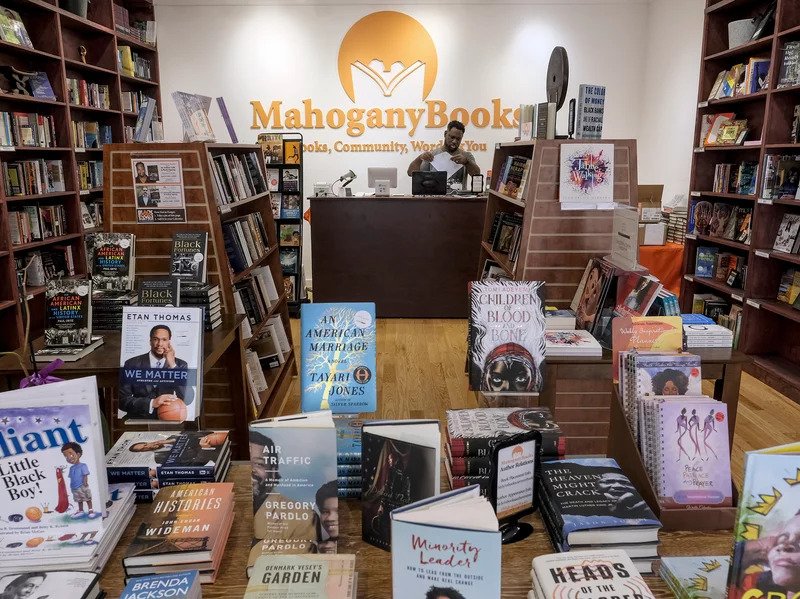
A Moment Or A Movement? Black Bookstore Owners On Business One Year Later
On the day George Floyd was murdered — Monday, May 25, 2020 — there weren't any books exclusively tackling white privilege, anti-Blackness, or policing on the New York Times' Best Sellers list. White Fragility by Robin DiAngelo was the only book to break through the week of May 31, but by June 21, almost 70% of the Times' Best Seller list confronted race.
With the sale of print books rising just over 8% and all unit sales of books surpassing 750 million, Black bookstores would play an integral role in feeding the nation's "sudden" appetite in the plight of Black people.
Black bookstore owners like VaLinda Miller of Turning Page Bookshop in Goose Creek, S.C., can attest to the book boom.
"It was crazy and extremely overwhelming. And I had to hire some more staff members just to mail out the books," Miller says. From June through August, Miller says they "were getting [anywhere] from 100 to 200 to 300 orders a day."
Even though anti-Blackness is an indiscriminate system that pays little attention to borders, Miller was especially shocked by the international shipping addresses.
"About 70% of my customers were from the United States... [but] I was surprised I got so many people from Brazil and Venezuela and so many other foreign countries," Miller says.
She called the surge "unbelievable," and that word resonates twofold for Miller, who had to close her first bookstore, The BookSmith, after only a few years when "people weren't interested" in what she had to offer."
After Miller reopened in June of 2019, she learned from this and took on a different approach when engaging this past summer's burgeoning readers. She prodded customers to buy a book from their favorite genre in addition to the book on race that they were solemnly after. Miller vividly recounts an instance where an elderly white man entered her store looking for White Fragility.
"He said 'My wife told me to come in here and buy a book by a Black author so I can support a Black-owned bookstore,' " Miller says. Her store is the only Black-owned, brick-and-mortar bookstore in the state.
"I want you to support my store," she remembers saying, "but if you're going to buy this book, especially considering what's going on, I need you to also buy another book because I know what you're going to do. You're going to take this book home, put it down, and read the other book," Miller says.
A few months later, this same gentleman stopped by Turning Page Bookstore to confess that he did exactly that.
In other places across the country, Black bookstore owners saw new customers who were engaging in anti-racist reading. Derrick Young, one of the co-owners of Mahogany Books in Southeast Washington, D.C., where the population is more than 90% Black, says he noticed more white customers coming to shop in his store.
"We're definitely seeing more people who seem like they're really willing to do the work; we see people who aren't just picking up notable bestsellers like White Fragility," he says.
Young is able to gauge those willing to "do the work" based on the books they're asking for. He believes it's indicative of where that person is on their journey.
"We see people who are coming in to buy books like Chocolate City from us, or Medical Apartheid," Young says. "Books that are a little bit more specific and dealing with issues that we've been talking about for a long time that create issues of equity in our communities."
Young says that his store, which was recently nominated for Bookstore of the Year, has seen some patron attrition, but admits that was inevitable. He isn't discouraged; he's moved by the continued growth of readers who keep coming back.
"They're coming back not just to purchase books around Black people, but we now have people who are purchasing books specifically about women issues, about LGBTQ issues," Young says. "So, you know, it is really good to see that people are sticking around and trying to do the reading necessary to really open up their minds."

La'Nae Robinson, co-owner of Bliss Books & Wine in Kansas City, Mo., saw something similar in her customers.
"They were forming some of their own book clubs and reading groups and they were looking for recommendations," she says. "They wanted us to help facilitate."
These facilitated conversations led to a bevy of questions.
"Like 'I really didn't understand everything that was going on, but now that I do know, how do I learn more?' And 'What do I do with the information that I have now?' " Robinson recalls.
Bliss Books & Wine made these conversations more immediate to Kansas City and started virtual book conversation with local authors. Robinson believes this is how her bookstore was able to retain some customers who may have stopped by once or twice just to say they supported a Black bookstore and bought an anti-racist book.
"I think it allowed us to bring in those new customers and then introduce them to new books and some of the classics — some of the ones that were more known within the Black community, but not necessarily mainstream or within the white community," she says.
While print book sales are still surging, the Black bookstore owners who spoke to NPR say sales are down for them when compared to last summer, when they were handling 100-300 orders per day. Some of the books purchased at the apex of last summer's protests were never finished. And there are no longer legions of protesters marching for accountability for consecutive days, despite their personal feelings toward the Black Lives Matter global network.
Measuring America's progress on race relations one year after a video of George Floyd's murder at the hands of former police officer Derek Chauvin went viral is both premature and inconclusive. However, if last year's book boom on all things white privilege and anti-racism is a litmus test, then, at least in theory, Americans are intrigued at understanding racism and its byproducts.
photo citation
Derrick Young, co-owner of Mahogany Books in Washington, D.C., says his store has seen new customers in the last year who seem to be "willing to do the work" to educate themselves on issues of race in America.
Bonnie Jo Mount/Getty ImagesLa'Nesha Frazier and La'Nae Robinson own Bliss Books & Wine in Kansas City, Mo. Robinson says that even though readers might have initially come in "to check the box," overall they've retained new customers.
Courtesy Bliss Books & WineWelcome to the Self-Published Science Fiction Competition! Or the spussfic, as we like to call it around here. What in the world is the SPSFC? It’s an opportunity to shine a great big laser beam on wonderful works of self-pubbed science fiction.
Some rules for admission
1) Your book must be a standalone or the first in a series.
2) One book per author. So send your best!
3) It must be a novel, not an anthology.
4) The book must be self-published and available for purchase now.
5) Works must be at least 50,000 words.
Contest link
https://hughhowey.com/the-spsfc-begins/ -
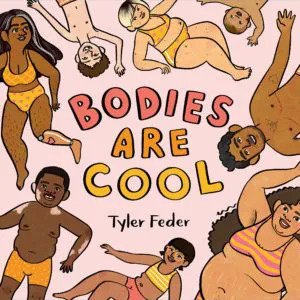
I admit, without shame, that outside a recent work, I haven't written anyone who is paraplegic or in the commonly called disabled ranks. Does this mean disabled people shouldn't have a place in afrofuturism or any genre ? of course not.
Does this mean I need to make an effort to place so called disabled people in my work? no, cause I don't believe in pushing agenda in my fiction. I speak agenda writing prose. My fantasy worlds are not built for agenda, they are built for fun. I enjoy my fantasy worlds. ... A woman with one leg can be stronger, more abled than superman, yes running with one leg faster than he can run with two. She isn't in my fantasy worlds, but I can't believe she isn't in any.I quote the article in brackets <
According to the Cooperative Children’s Book Center’s 2019 study, only 3.4% of children’s books have disabled main characters. Compare this statistic with the CDC’s finding that 26% of Americans have disabilities, and it’s easy to see there’s a problem. The children’s book industry is failing to portray the many myriads of ways bodies and people exist and interact with the world. These are ways that many children experience themselves or will experience in the future.
>
The article author ask an important question but leads to a false answer. The question is, how can representation of fictional characters with disabilities have greater quantity in books published in a year? The answer isn't in the industry but in the members of the industry. The author suggest the publishing houses need to modify their yearly quota of published books to make sure certain characters are in them. But that goes against fiscal capitalism. If the publishing houses do as she suggest and then their accountants say they lost money compared to the prior year, what then?
The answer is for the government to make its own publishing house. Said publishing house has two costs: costs of infrastructure, revenue from books. Book authors get a percentage of revenue from sales. The rest goes to infrastructure for the publishing house and any extra goes to a financing growing infrastructure. But, the publishing house chooses stories reflecting demography. so the characters in books as well as the quality of characters in books have to equate to the average in the population. so, if 58 percent of the people in the usa are women then 58 percent of the characters in the combined books published for a year need to be 58 percent women, give or take a five percent shift, forward or back. To use the statistic above, 26 percent of the stories need to be people deemed disabled. In the women or disabled, it is wise to make sure, half are positive while half are negative. HAving every female character a villain is dysfunctional or negatively biased at the least....
the article end with explaining how industries dominated or owned by one community do not cater to the other. In the same way, white owned firms do not cater to black fantasy. Abled, meaning no disability << even though every human has disability, which is why I prefer extrachallenged over disabled, cause every human can overcome any challenge if they believe in themselves, but we all have disabilities >> people, own or dominate the publishing industry so why will it be natural to support the commonly called disabled. Blacks/Women/Extrachallenged/each from the LGBTQ+ need to OWN THEIR OWN FIRMS to produce content for them. THe USA allows anyone to own today. That is the closest to an aracial morality you can get in fiscal capitalism. But asking every human heart to be aracial is not only silly, it will never receive 100% positivity in reply.Article
https://bookriot.com/disability-representation-in-childrens-books/ -

The article author begins by explaining how magic or myth primarily or only involving Black people was all about her environment growing up in Sierre leone, even with the war.
Then she says the following, I quote in brackets <
When I moved to the US in 1996, war was suddenly no longer a part of my life. But neither was the magic. Instead of goddesses and Amazons, there was now the legacy of slavery, civil rights and racial struggle. I was told that I was a Black person, and that Blackness came with a particular history and set of expectations, most of which I’d never heard of before. I’d only ever been Temne, my tribe in Sierra Leone. How was I supposed to understand this new identity?
>funny how someone from a country called Sierre Leon, which means mountain lion in a european tongue, started by white peoples of england to rematriate black people of africa into africa had no comprehension of being black before coming to the usa. I don't know if it says more about her or the adults about her growing up. BUt, she is wrong. The magic of the black community exist, alongside its history of enslavement-wars-coexistence to whites. Les Cennelles is magic. High John is magic. The DEvils Daughter is magic. The Gullah is magic. The seminoles, like Jonas Caballo, is magic. Now, was any of this magic on hollywood boulevard? no. Was all of this magic in every black home in the usa? no, most black people whose forebears were enslaved in the usa will never admit the black community in the usa after the war between the states tried to get rid of alot of its culture, collectively or individually, home to home.
I quote the article <
Worse, there were no more epics. Growing up, my father had explained to me that epics – especially fantasy epics – are the mythos of a culture: they determine how a people see themselves. But in the US, it seemed Black people weren’t afforded the privilege of crafting our own narrative in the fantastical sense. In every book, every film, every advertisement, Black people struggled. We were poor, we were uneducated, on drugs or the drug dealers. We were baby mamas, gangsters and prisoners. We were perpetual victims or perpetual predators, lurking on the fringes of society.
>
SHe used the word : seemed as in past tense. It did not seemed, it was true. from the 1500s to 1860s black people in uncontestable majority were disallowed by whites to read or write, by pain of death. 350 years solid of that kind of treatment seems to me a great disallowance, not merely a privilege but a right. Yes,most media in the USA, including today, is written/financed by white people who don't have a positive view of black people or at the least have a laborious opinion to black life in the usa. But, the usa is a white country. DW Griffith wasn't alone. But his argument is key. Griffith argued against the NAACP that every artist has the right to create what they want. Nothing stopped black people from making films providing negative caricature to whites. The problem isn't merely that white people in the usa dominated black people. But black leaderships choice to lead the black community on the grounds of aracial morality, had a cost.I quote again in brackets <
But this didn’t make any sense to me. I knew my history. Yes, some Black people had been slaves, but others had been queens, kings, adventurers, tricksters, country folk. Yes, there were huts and slave cabins, but there were also castles in Ethiopia, towering walls and streetlights in Benin, libraries in Timbuktu and fortresses in Great Zimbabwe. The richest man to ever exist, Mansa Musa, was African. The N’Nonmiton, the female warriors my father and grandmother had told me tales about when I was young, were African. There was more to Blackness than struggle.But in every Black book that won a medal, or every Black film that won an Oscar, there was always a Black person struggling against racial oppression. There are consequences to only lauding such portrayals. Perpetually tying the narrative of Black people and Blackness to slavery, colonisation and oppression meant that Black people – Black children especially – were denied the chance to see ourselves as heroes with agency over our worlds. And non-Black people were denied the chance to root for us, only feeling pity and, of course, relief that they were not Black.
>I notice she likes to place Black happiness in Africa alot. Black people in Haiti built the sans souci palace or the citadelle la ferriere, designed by a white man. Black people in India built a castle that still stands facing the indian ocean. Free black communities existed in the south western coast of mexico to the north eastern coast of south america. MAroons is the name in Jamaica. I can't deny it was hard for black people to be advertised as kings or queens in the american continent BUT we had country folk like free gunfighters, adventurers in every free community, tricksters like High john.
Her greatest problem is she confuses white awards placed on black people that suit white narratives or white made art interpretions to black people with Blackness.
... I admit my biggest problem is personal. I grew up in the USA, in NYC, by two black parents, and I always felt the black fantasy world was full of life. I don't accept the narrative from her or any black person that our fantasy wasn't around. Her parents or whomever raised her failed.I Quote her again <
This is the reason I became a writer. I wanted to create a fantasy world on par with the ones in my favourite books from childhood: The Lord of the Rings, the Chronicles of Narnia and Harry Potter. I wanted to put Black and brown people at the forefront of this world; and women, who have so often been pushed to the periphery of fantasy, at the very centre. In the tradition of my favourite Black female authors, such as Toni Morrison, Octavia E Butler and Zora Neale Hurston, I wanted to create spaces where I could hold up Black people, especially Black and brown women, to ensure that they too were seen through the lens of the fantastic, that they too could be fairies, mermaids or creatures of myth.
>I write simply what I want to write. I admit, I never wrote anything trying to make it on par with anything else. I have an idea, a world I want to create and I create it. Her work by her own admission is agenda filled. She wants to show everybody, black or nonblack, that she can make a fantasy world that will be adored by all, and at the center of it will be women of color. I am a black man so I don't have the advertised limits that go with being black plus woman.
...
Then she explains her work. I imagine if any one who read this gets this far, they will think I despise this , quite pretty, black woman. I am a black man and I do not:) but, I have issue when any black artists starts speaking that lie of black myth absence. It is black people's fault, black parents fault. Plain or simple. Black people from the Haitians to the Ashanti to the Negritos all have myth or legends. Yes, most are merely oral tradition. The least are in books out of print or in libraries. But, the black fantasy world exist. Trust me folks.
Photo citation
Namina Forna, author of The Gilded Ones. Photograph: Lillian Hathaway
-
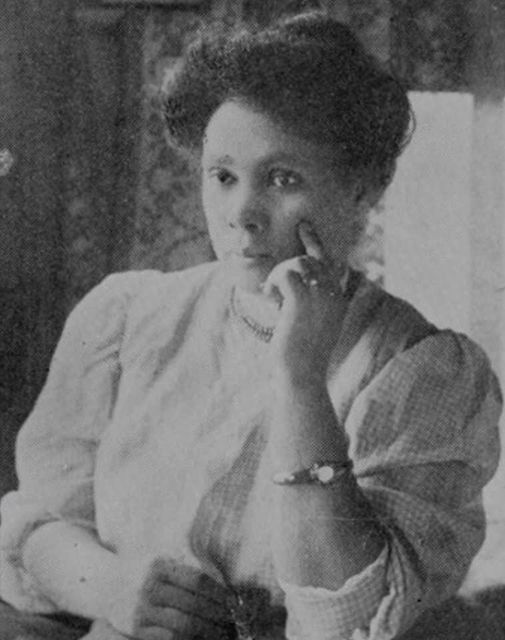
Maria P. Williams, who, like Tressie Souders, also lived in Kansas City, Missouri, produced, distributed, and acted in her own film, The Flames of Wrath (1923). The Norfolk Journal and Guide, as quoted by Yvonne Welbon, thus lauded her: “Kansas City is claiming the honor of having the first colored woman film producer in the United States…”
Read the complete article below
-
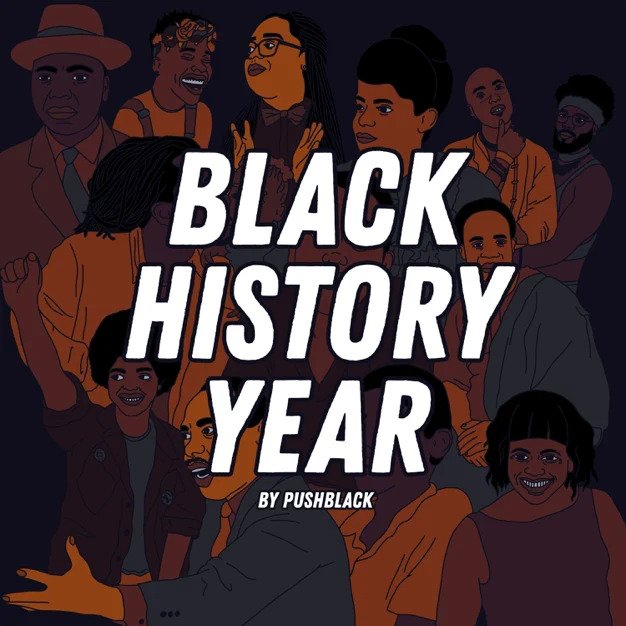
The True Story Of Black Wall Street with Raven Majia Williams- audio podcast
https://podcasts.apple.com/us/podcast/id1471015571?i=1000515789193 -
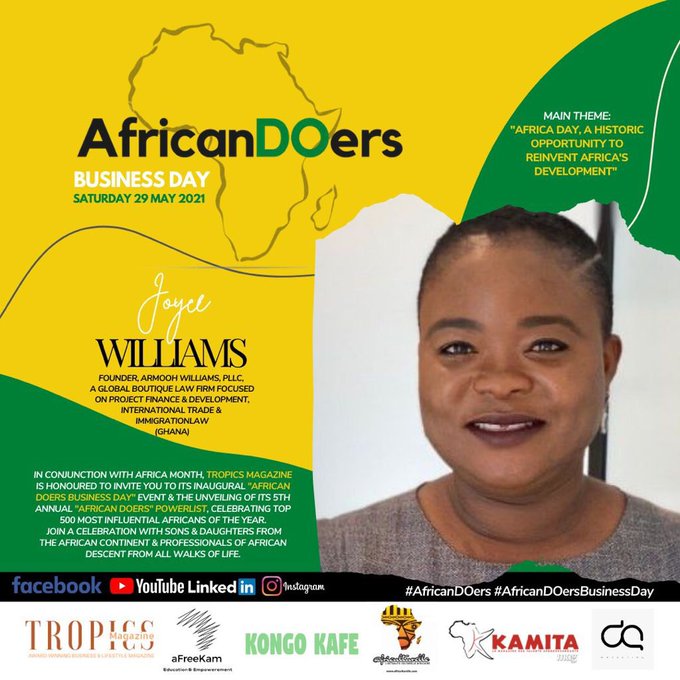
Africa day, a historic opportunity to reinvent africa's development
#africaday2021 @tropicsbusiness
https://www.youtube.com/channel/UC0mTocvrPaHoqzeOZwvGnXQ -
Well... it is another Friday, another day to love, to Oxum, Oshun, Freya, or Venus, another day to Kizomba!
The thing about Puto chinez that you may already know is how much he loves the sliding techniques. What I liked alot in this video was that Efy used a lot of small movements as well. I find that rare. Usually, the leg movements from women are long stride or simple, designed to do whole body movements or to keep the momentum. But, not the embellished steps that the male dancers tend to love to do. -

Entertainment Spotlight: Dara Reneé
High School Musical: The Musical: The Series
Orange you glad that Dara Reneé, AKA Kourtney, took the time to play two truths and a lie, tell us about her most awkward date, and cast herself in the HSMTMTS Marvel alternate universe.
FULL VIDEO Question and answerhttps://featured.tumblr.com/post/652454341204230144
-
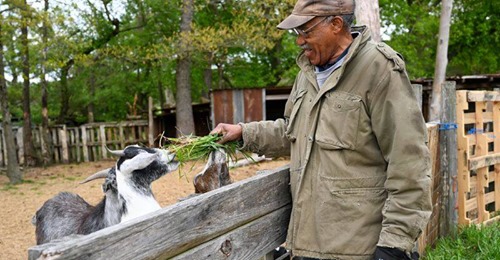
Free Black men and women founded an Eastern Shore village to avoid attention. Now their descendants want to share the stories.
It’s a sunny late afternoon on Gran’Sarah’s Hill, Newell Quinton’s 40-acre spread in a wooded corner of northwestern Wicomico County, and the lanky 77-year-old is in his element.
His 50 goats scurry and bleat as he walks among them, tossing out feed. His female hogs, Laverne and Shirley, nestle in a pen, each pregnant with a litter of piglets.
He’ll sell the goats and butcher or market the hogs when the time comes, making use of every cubic inch of living inventory just as people have done in the remote community of San Domingo, Md., for more than two centuries.
“We’ve never wasted much of anything here,” he says cheerfully. “It’s one of the values that has kept us going.”
Quinton is a native son and ongoing champion of San Domingo, an enclave of a few hundred mostly African American residents just inland from the Nanticoke River on the Eastern Shore.
Established as a settlement of free Black men and women in the early 1800s, it is believed to be the first and oldest such community in the state. But that is not all that makes this out-of-the-way place unique.
In a place and at a time when the slave trade was at its strongest, and when most Black people classified as free lived on property owned by others, San Domingo’s founders owned and tended land, set up businesses, built a church and a school, raised families and generally created a close-knit, thrifty and self-sufficient community that coexisted peacefully with the White towns around them well into the mid-1900s.
When Quinton works Gran’Sarah’s Hill, he says, he’s not just earning a living. He’s carrying on a way of life that made the community possible for all those years, right into his childhood.
He pauses and leans on the hog-pen fence.
“Not everyone was lucky enough to grow up the way we did, and we’d like to keep those values alive,” he says.
It has been said that San Domingo, a census-designated place between Mardela Springs and Sharptown near the Delaware line, is not on the main road to anywhere, and a two-hour drive from Baltimore bears out the idea.
Cross the Bay Bridge, head south through Caroline and Dorchester counties, hit the successively smaller towns of Federalsburg, Eldorado and Sharptown, and you’re in the neighborhood.
You may spot a lone sign — “Welcome to San Domingo: A Community of Free Black Pioneers” — that residents put up in recent years. From there, a byway curves to its central gathering place.
Quinton and two contemporaries are already at the San Domingo Community and Cultural Center, a two-story frame building that once served as the area’s “colored school,” and ready to talk their hometown.
Told it was a little hard to find, they all burst out laughing.
“Oh, San Domingo was designed that way,” says Rudolph Stanley, 72, a retired math teacher who has been conducting genealogy research on his birthplace since 1999. “It can be tricky if you don’t have good reason to be here.”
And he, Quinton and Quinton’s older sister, Alma Hackett, 78, launch into tales about growing up in a place where you had to know every creek and clearing just to get from one place to another.
The Johnsons were free Black pioneers in Virginia < https://www.washingtonpost.com/local/virginia-politics/anthony-and-mary-johnson-are-pioneers-on-the-eastern-shore-whose-surprising-story-tells-much-about-race-in-virginia-history/2019/04/29/aefaec8e-605d-11e9-bfad-36a7eb36cb60_story.html >
No one knows for sure exactly how and why San Domingo first came into being, but U.S. census records from the early 19th century offer tantalizing clues.
They suggest, for one thing, that no free Black people lived in the area as of 1810 but that more than 600 had settled there in 109 households by 1820. Residents were listed as having a range of occupations, from grocer and carpenter to shipwright and pastor. Several owned acres in the hundreds.
Historian Mary Klein was astonished to stumble on that information in the early 1990s while conducting research on the lives of free Black residents of the Eastern Shore for her master’s degree thesis.
It was remarkable, she says, not just to see a community of free Black people on the plantation-rich Eastern Shore nearly half a century before the Civil War but to realize it came together so rapidly and intentionally.
“You could see they had gathered together on purpose to form this large community, and it became this very successful, largely self-sustaining venture,” says Klein, now an archivist with the Episcopal Diocese of Maryland. “I’ve researched communities all over the state, and I’ve never come across anything like it, especially that early.”
Her efforts led to “These Roots Were Free,” a 36-page book that remains the only academic study of San Domingo. But a handful of people who grew up there have long worked to paint a fuller picture.
Research into church records and family trees by Stanley and by Eubert G. Brown, a retired Air Force officer, confirms that a James Brown who is listed as a mariner in the 1820 Census was its founder.
Image without a caption

The headstone for San Domingo founder James Brown in the woods at the edge of the community. (Jerry Jackson/Baltimore Sun)Brown’s children and grandchildren became community pillars, and his descendants — including Eubert Brown, 85, his great-great-grandson — have proliferated alongside a few other families, the Stanleys included, ever since.
Many residents believe that James Brown and others first came to the area by boat in the aftermath of a notoriously bloody slave revolt that took place in Santo Domingo, Haiti, around 1800 and that they named the community as a nod to that uprising.
Eubert Brown disputes that — he believes the founder was a different James Brown, a free Black man born in Somerset County — but he agrees with most that the name was chosen as a tacit warning to “intrusive Whites,” as he puts it.
“We feel the community avoided trouble out of fear of the name,” Brown says.
True or not, it’s clear the community prioritized keeping a low profile, a fact Quinton is sure helped foster the tranquility it enjoyed right into the 1960s in a region not known for its solicitude toward African Americans.
Though many San Domingans worked in nearby White communities — Quinton’s mother did “day work” in family homes in Sharptown, for example, and Stanley was a part-timer at a packaging plant there — their lives overwhelmingly centered on supporting and taking care of one another.
Someone was available to provide just about every important skill, Quinton says, whether it was delivering babies, digging wells or helping hogs through the mating process.
Eubert Brown’s grandfather, Hargus, couldn’t read or write, but he built sturdy houses, crafted headstones and used a dowsing stick to find water. Stanley’s dad, Rudolph Abraham Lincoln Stanley, owned the trucks that carried many to work, and Quinton’s father, George Bernard Quinton, raised soybeans and felled trees for firewood.
Brown recalls a group of ladies who moved from house to house, making quilts for families for the winter. Quinton remembers that someone always seemed to be preparing to harvest a hog in the days leading up to Thanksgiving.
“The whole community had that independent spirit, helping each other to be successful,” he says.
San Domingo was so self-reliant, Quinton and others say, that growing up in the 1940s and 1950s they had little experience with the Jim Crow realities that prevailed just beyond its borders. Children heard almost nothing.
Harriet Tubman’s lost Maryland home found < https://www.washingtonpost.com/history/2021/04/20/harriet-tubman-maryland-home-found/ >
Ask about their childhoods and each becomes a griot. Hackett remembers the “Sharptown Colored Elementary School”as a place with classrooms full of children, caring teachers who lived in the community and May Day galas that brought out the girls’ finest dresses. It was in San Domingo but served surrounding areas, too.
The school was the local version of the Rosenwald Schools built for Black children , https://www.washingtonpost.com/local/education/we-refuse-to-let-people-forget-in-virginia-a-push-to-remember-historically-black-high-schools-before-they-disappear/2020/01/03/3ddd3dea-2e2f-11ea-bcd4-24597950008f_story.html?itid=lk_inline_manual_57 > across the South in the early 1900s — facilities made necessary by segregation. But Hackett says the children had no clue about such things.
“Everyone there was totally committed to us succeeding,” says Hackett, who attended the school from 1948 to 1954, three years before it closed as part of desegregation. “We were blessed to go there.”
Church, too, was central. Nearly everyone attended services for hours each Sunday at New Zion United Methodist, and the building hosted community dinners, emergency meetings, even raccoon and squirrel hunts.
Quinton’s great-uncle Norman T. Brown, a school bus driver, also ran the town’s general store, where he peddled everything from coal oil to wheels of cheese, often extending credit.
Quinton worked there when he was 13. “If Uncle Norm had to leave me in charge, he’d say, ‘Give them what they want and put them on the book — they’ll settle up Friday,’ ” he recalls. “If they had no money Friday, they’d come in with some eggs or potatoes and say, ‘Will this take care of it?’ ”
“It always did,” he says. “I never, ever saw a disagreement.”
The children of Quinton’s generation became successful in life, he and others say. They cite the long hours they spent working nearby farms each summer — which taught them what they didn’t want to do — and the way their parents pushed them to get educated.
Most graduated from Salisbury High School, the county’s all-Black high school nearly 20 miles away. Quinton, his seven siblings and Stanley all went on to graduate from what is now Morgan State University.
Quinton joined the Army and turned the experience into a four-decade career with the federal government. One sister, Barbara, became a doctor. Stanley had a 42-year career teaching math in Wicomico County schools, and Hackett taught biology and chemistry for 38 years in Somerset County.
Once segregation ended, San Domingo’s young adults began leaving the area in search of greater opportunity. Many sold inherited land. Some houses were razed or abandoned. But some old-timers, like Stanley, never left the area for long; others, like Quinton, returned decades later.
Image without a caption
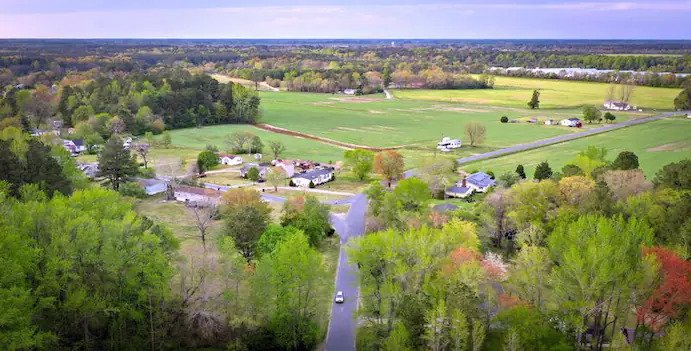
San Domingo, nestled between the Nanticoke River and Sharptown Road in rural Wicomico County. (Jerry Jackson/Baltimore Sun)Today, Quinton leads an effort to preserve San Domingo and share its story. The John Quinton Foundation, a nonprofit group he and Barbara established (and named after their great-grandfather), got the Rosenwald School restored in 2004, reopened the building as a community center in 2014 and continue to use it as, among other things, headquarters for an annual Founders Day gathering each April that has drawn crowds as big as 200 for lectures and historical reenactments.
The coronavirus pandemic has forced its cancellation for two straight years, but Quinton is planning to host one in 2022. Donations to the nonprofit help underwrite that effort or can be directed toward scholarships and life-skills tutorials for local youths. “Everything we do is to continue teaching the value and character we believe our founders and grandparents instilled in us so that younger people can benefit from the same things we originated from,” he says.
Gran’Sarah’s Hill, meanwhile, is a living testament to those values. It’s named after Quinton’s great-grandmother Sarah, the granddaughter of community founder James Brown, and was one of his favorite places to play as a boy.
Quinton plans to slaughter two or three of his hogs this year and use the meat for pork loin, sausages, scrapple and more. And one day this November, he and a few other residents will follow a more recent tradition, offering the food to whatever friends and neighbors decide to drop by.
For Quinton, San Domingo is worth sharing.
“It had virtues that should not be lost,” he says. “We want to make sure people remember what created this community we love.”
— Baltimore Sun
ARTICLE
< https://www.washingtonpost.com/local/free-blacks-san-domingo-eastern-shore/2021/05/24/86ed2760-bca5-11eb-9c90-731aff7d9a0d_story.html >
-
A list of films labeled afrofuturism... that label or its definition is not standardized, but all of these films involve science fiction elements and black characters.
Great list https://www.criterionchannel.com/afrofuturism
In amendment
My issue is the criterion collection made its own streaming situation and it isn't everywhere, again, the problem with streamers is they have all these paid services and well, I Am not paying for all these services. I know this is a film group but I think beinsports has it right, streaming services must be free and paid for through commercialing in the future, the fragmented cable model for streaming services is dysfunctional
From the website
Afrofuturism
Coined in 1994 by critic Mark Dery, the term “Afrofuturism” has become an essential framework for art about imagined and alternative Black experiences. As the author Ytasha Womack writes, “Afrofuturism combines elements of science fiction, historical fiction, speculative fiction, fantasy, Afrocentricity, and magic realism with non-Western beliefs.” Afrofuturist ideas have found fertile ground in film, and this expansive series takes viewers on an international, intergalactic journey that stretches back long before the term existed, and far into the future. Spanning animation, documentary, and genre spectacle, these exuberant visions of Black creativity, resistance, and freedom zigzag across the African diaspora from New York to Brasilia to Kinshasa to worlds unknown. Curated by Ashley Clark, the series draws together films from Space is the Place: Afrofuturism on Film, which took place at Brooklyn Academy of Music in 2015; a sequel planned for 2020 that was canceled due to the pandemic; and a selection of all-new titles, many of them available for streaming for the first time. -
I know Belafonte but I never heard his rendition of John Henry:) I remember the ezra jack keats book as a kid. As a historical note in fiction, it is interesting that Black people have two Johns, as one of my poems say:) One is High John the other is John Henry. High John is older, he is from pre war between the states. John Henry, a railroad worker is from post war between the states and to be blunt, from the reconstruction era. If anything he was killed by Jim Crow, not just the railroad. I will never forget hearing white bluegrass people singing about john henry. Open pulpit question coming: has his wife been named Pollyanne usually? Some times John Henry's wife isn't mentioned sometimes she is, but just as his woman, but she has been named in a number of renditions I know of; but I wonder how often she is named PollyAnne?
-

I quote the review: "And most importantly, it’s Black and never lets you forget it. ... Why is that important? Because I think the way Blackness (in this case the Deep US South variety) experiences horror is unique because of the ways history has oppressed us. " I thought about this comment for a bit and I read in the past year or two many reviews of black artwork: film/poetry/painting/et cetera talking about horror/criminality/being bad as an uncommon angle. The word unique in inappropriate, the black community in the usa is not the first community that lives under or aside another, another being the white community in the usa, thus suffers abuse from under while tries to prosper aside. The uncommon angle refers to , in my opinion, a moral relativity. Morals are laws/codes/rules . The majority in the black community, not all black people, in the usa live by a philosophy of moral equivalence. The philosophy is, I paraphrase al sharpton, whomever acts amorally is against the moral struggle. I rewrite, if the goal is to be enact positive change through nonviolence, then not only do white people who act violently have to be opposed but black people that want to reply violently have to be opposed. Now, why do I say this in terms of the elements of horror in black fiction? Historically in the usa, most visual fiction by whites , creates or sustains a mythology of goodness to the system, or agents to the system. <I excluded literary fiction as you can find examples of white literature in the usa where the system or agents of the system are deemed horrible or written horrible, like from Flannery O'Connor or f scott fitzgerald > The lone ranger, law enforcement in visual media in general in the usa. But, black horror says, the criminalitiies or illegalities of the goglamite creature <I Stole that name from a samurai jack episode, can anyone name what the episode it about? epoints up for grabs:)> is equivalent to the law enforcer. It isn't , the law enforcer is forgiven or forgivable while the goglamite creature is the primary amoral agent. She referred to the film US, and at the end of the day, the great evil mastermind in the film is the heavily financed negligence of the usa government. Beyond the clones, the true source of the evil is a government that was able to finance a project of such immense infrastructure that gardless to the reason lost sight of it. It isn't that the lone white family in the country side with chainsaws isn't amoral but that a government ineptitude can be equivalent in horror or, to be blunt, greater in horror scale. I do think reviews have to moderate their zoning of this issue. The literary world is full of examples of this, not merely from people of color, people of color defined as non white european descended people, but also , white people descended from europe. I think Titus from shakespeare can be deemed a horror story in terms of the activities of the characters, and all the main characters are the upper eschelon of society. Titus is a general, their is no bigger cop than that, and the emperor is the president for life. so... The sequential visual world, the film or television world, is the environment where you see true variance in moral coding if you compare said what people of color make compared to their other. And in defense of sequential visual media, the USA led the way in that media. If anyone read this far, and no I did not spell check or go back to change notations or words:), I think Baum/Fields/Disney had the largest influence on fiction in the infant film world in the usa . OZ/Birth of a Nation/Disney are the source of all the various commonalities. From older women being the bad witch, to the white man on the horse hero, to insulting representation of nonwhites, those three started it in film media and as film media grew or mutated, their principles survive to today. But, the usa doesn't have an ancestral base. The culture of the native american community isn't the cultural base of the usa. Europe for all of its similar biases has a cultural base to early humanity. Thus why European cinema has never been a mirror to usa cinema. I end with a simple point. It will be a challenge getting moral concerns to become equivalent to financial concerns for those who finance the arts in the usa.
Bacchanal by Veronica Henry – FIYAH (fiyahlitmag.com) -
Well... it is another Friday, another day to love, to Oxum, Oshun, Freya, or Venus, another day to Kizomba!
Here is another traditional party enjoying the dance. This is angola even though cape verde is mentioned. But here are some nice times to check out: 8th second (yes read this, remember and then watch), 25th second(very hard technique), 53rd second (Saint Michael), 1:05 (lovely reverse lay ,and they do a variation), 1:21 (strong female dancer to carry him so long). -
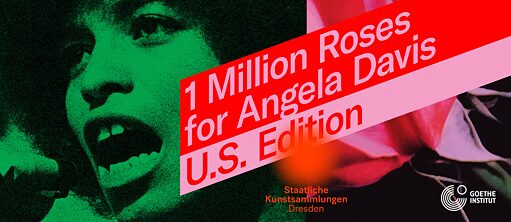
A Solidarity Campaign Revisited
Everybody in Germany knows Angela Davis. At least in the GDR of the early 1970s. There, a state-organized solidarity campaign had called for the release of U.S. philosopher, feminist, and Black Power activist Angela Davis. In collaboration with the Albertinum of Staatliche Kunstsammlungen Dresden (SKD) and the exhibition of the same name (until May 30, 2021), 1 Million Roses for Angela Davis U.S. Edition takes the postcard campaign as an opportunity to work with contemporary artists, curators, and scholars to take a look at a forgotten and often contradictory chapter of the relationship between Germany and the United States and to renegotiate questions about solidarity, activism, and ideology in changing times. Running from March to September 2021, the event series includes a reading group with texts on Angela Davis, a film program, an artistic lecture-performance, the digital exhibition of the postcard action, and several panel discussions, and a listening session.
Few East Germans over the age of fifty fail to remember the state-organized solidarity campaign calling for the release of the US philosopher, communist, and Black Power activist Angela Davis. “A million roses for Angela” was the motto of a postcard campaign in 1970-72 in support of Davis, who at the time was being held under terrorism charges. Millions of postcards were sent from the GDR to the court in California to support Angela Davis during her trial. Today these postcards are archived in the collections of Stanford University.
The large-scale campaign firmly anchored the activist within the cultural memory of the GDR, which — in this critical phase of the Cold War — sought to position itself by asserting its commitment to the comrade. In the GDR, the media spun Davis as the “heroine of the other America” and after her acquittal, she was welcomed as a state guest. For her part, Angela Davis had hoped for an internationalist movement promoting a socialist, feminist, and non-racist democracy — the antithesis of her experiences of violence and oppression in the USA. This moment of hope, utopia, and contradiction provides the historical starting point for the exhibition of the Albertinum (State Art Collections Dresden), which features contemporary works by international artists.
Artists focus on the issues that the now emeritus professor campaigned on at the time, which are still pressing today, and thereby initiate a discussion about the background, flaws, and unfulfilled potential of this unusual relationship between Davis and the GDR. In photographs, videos, sculptures, sound installations, and conceptual works a young generation of artists focuses attention both on Davis’ ongoing commitment to social justice and her struggle against racism and sexism, as well as on how her iconic image came to be inscribed within a global history of resistance.
In dialogue with archival materials, the exhibition opens an experimental space of encounters between the past and the present, linking the socialist internationalism of the GDR to the world-wider Black Lives Matter movement.
Angela Davis was and still is part of a global and entangled history of resistance. Through the program 1 Million Rosen for Angela Davis - U.S. Edition the Goethe-Institut and the Albertinum open up and widen the scope of the exhibition in Dresden and provide different opportunities to explore deeper this little-known chapter of relations between Germany and the US.
A project of the Albertinum (Staatliche Kunstsammlungen Dresden) and the Goethe-Institut New York.
Organized by Kathleen Reinhardt and Deniz Sertkol
The exhibtiion is supported by Kulturstiftung des Bundes, Bundeszentrale für Politische Bildung, Outset_Germany Switzerland, Fundacao Calouste Gulbenkian, Stiftung Frauen in Europa, Tu Was Stiftung für Gemeinsinn, Rosa Luxemburg Stiftung.
The catalog for the exhibition 1 Million Roses for Angela Davis at Albertinum (Staatliche Kunstsammlungen Dresden) was published by Mousse Publishing and is available to order at your book dealer of choice (ISBN 978-88-6749-439-2).
Kathleen Reinhardt is an art and cultural historian and, since 2016, curator of contemporary art at the Albertinum in Dresden where she has curated the exhibitions Marlene Dumas: Skulls, Slavs and Tatars: Made in Dschermany, For Ruth, The Sky in Los Angeles: Ruth Wolf-Rehfeldt and David Horvitz and Demonstration Rooms: Céline Condorelli, Kapwani Kiwanga, Judy Radul (co-curated with Isabelle Busch). She received her doctorate from the Arts of Africa department of the Freie Universität Berlin in 2017 with a dissertation on contemporary African American art, for which she received a scholarship from the Fulbright Commission as a visiting researcher at the University of California, Santa Cruz. She has taught at Freie Universität Berlin and Technische Universität Dresden. Her writing has appeared in art catalogs as well as the magazines African Arts, Art Margins, Contemporary And, and Kaleidoscope, among other publications.1 Million Roses for Angela Davis - U.S. Edition - Goethe-Institut USA
more information
One Million Roses for Angela Davis - U.S. Edition - Goethe-Institut USA
-
 Lee Evans, the 1968 Olympic 400m champion and human rights activist, has died at age 74, according to USA Track and Field.Lee Evans, the 1968 Olympic 400m champion and human rights activist, has died at age 74, according to USA Track and Field.Evans suffered a stroke last week in Nigeria and was unconscious in a hospital there as of Sunday, according to the San Jose Mercury News.Evans was 21 when he won the 400m at the Mexico City Games in 43.86 seconds, the first time somebody broke 44 in the event.“I was so tired, I knew I did something I’ve never done before,” Evans told NBC Sports for the film “1968” on those Olympics. “I wasn’t sure I won. Nobody told me I won, so they said, ‘Lee, you son of a gun.’ I said, ‘Who won? Who won?'”He later anchored the U.S. 4x400m to gold in a world record. Both records stood for two decades.Evans ran collegiately for San Jose State — “Speed City” — with Tommie Smith and John Carlos, 1968 Olympic teammates who took gold and bronze, respectively, in the 200m in Mexico City.Evans was a founding member of the Olympic Project for Human Rights and one of the athletes to fight for racial justice before and during those Games.He wanted to withdraw from the 400m final after Smith and Carlos were kicked out of the Olympics after raising black-gloved firsts on the medal stand. But Smith and Carlos convinced Evans to run, according to Olympedia.org.Evans said an official warned the U.S. 400m runners before the final not do anything similar to Smith and Carlos. The official was worried the U.S. team would get kicked out of the Games.Evans then led a U.S. medals sweep of the 400m with Larry James and Ron Freeman. All three wore black berets in support of the Black Panther Party for the victory ceremony. They removed them for the anthem, a decision Evans said was made before the Olympics given they still had the 4x400m relay to run.“After what Tommie and John did, there was a lot of commotion,” Evans said in 2017. “We had meetings, and yelling, but it turns out, we stuck to our guns.”Evans later coached and directed track and field programs for decades internationally.
Lee Evans, the 1968 Olympic 400m champion and human rights activist, has died at age 74, according to USA Track and Field.Lee Evans, the 1968 Olympic 400m champion and human rights activist, has died at age 74, according to USA Track and Field.Evans suffered a stroke last week in Nigeria and was unconscious in a hospital there as of Sunday, according to the San Jose Mercury News.Evans was 21 when he won the 400m at the Mexico City Games in 43.86 seconds, the first time somebody broke 44 in the event.“I was so tired, I knew I did something I’ve never done before,” Evans told NBC Sports for the film “1968” on those Olympics. “I wasn’t sure I won. Nobody told me I won, so they said, ‘Lee, you son of a gun.’ I said, ‘Who won? Who won?'”He later anchored the U.S. 4x400m to gold in a world record. Both records stood for two decades.Evans ran collegiately for San Jose State — “Speed City” — with Tommie Smith and John Carlos, 1968 Olympic teammates who took gold and bronze, respectively, in the 200m in Mexico City.Evans was a founding member of the Olympic Project for Human Rights and one of the athletes to fight for racial justice before and during those Games.He wanted to withdraw from the 400m final after Smith and Carlos were kicked out of the Olympics after raising black-gloved firsts on the medal stand. But Smith and Carlos convinced Evans to run, according to Olympedia.org.Evans said an official warned the U.S. 400m runners before the final not do anything similar to Smith and Carlos. The official was worried the U.S. team would get kicked out of the Games.Evans then led a U.S. medals sweep of the 400m with Larry James and Ron Freeman. All three wore black berets in support of the Black Panther Party for the victory ceremony. They removed them for the anthem, a decision Evans said was made before the Olympics given they still had the 4x400m relay to run.“After what Tommie and John did, there was a lot of commotion,” Evans said in 2017. “We had meetings, and yelling, but it turns out, we stuck to our guns.”Evans later coached and directed track and field programs for decades internationally. -

Get ready to swoon. Berkley, a Penguin Random House imprint, is rereleasing three Stacey Abrams romantic suspense novels that have been out of print for many years. Originally published under the pen name Selena Montgomery, Rules of Engagement, The Art of Desire, and Power of Persuasion will be out in hardcover and audio in 2022. According to a release, each of these novels, which were her first published books, features “international espionage, page-turning action, a core love story, Black heroines, and a diverse cast of characters.” While the Democratic political leader and Team Spike fan has since written bestsellers on topics from voter suppression to leadership, she has never shied away from her romance-novelist roots. “As my first novels, they remain incredibly special to me,” Abrams said in a statement. “The characters and their adventures are what I’d wished to read as a young Black woman — stories that showcase women of color as nuanced, determined, and exciting. As Selena and as Stacey, I am proud to be a part of the romance-writing community and excited that Berkley is reintroducing these stories for new readers and faithful fans.” If you can’t wait until 2022 to read Abrams’s fiction, don’t stress. While Justice Sleeps, her first legal thriller, will be out on May 11.
https://www.vulture.com/2021/05/stacey-abrams-romance-novels-rerelease-berkley.html
-
Are you thinking about writing romantic comedy novels? You are in for a treat! Writing romcoms is a wonderful experience… but it’s not necessarily easy. That’s why I’m sharing 3 tips for you when it comes to writing humour into your stories.When I first started writing my Polyamorous Passions romance series in 2018, I didn’t really know what the subgenre was. I referred to these novels as “contemporary romances” and “new adult romance.” Sometimes it takes a while to hone in on our niche. I didn’t even know that “romantic comedy” was a genre of novels! A year into writing those novels, I happened to be reading a book by an indie author who calls her stories “romantic comedies,” and I realized that my style could totally be considered romantic comedy.READ THE COMPLETE ARTICLE
-
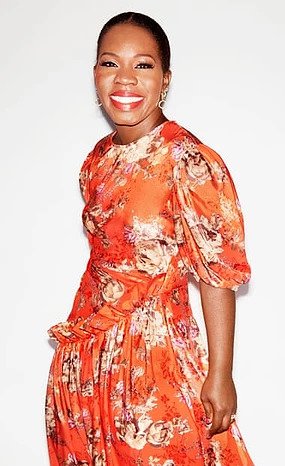
For years, hair and makeup products tended to exclude women of colour. Here, beauty columnist Funmi Fetto reveals how she faced up to racism in an industry that’s finally undergoing its own makeover
...
If you had told my teen self I’d be a beauty journalist and that I would write a book on beauty, particularly one geared towards women of colour, I’d have called you a false prophet. “You can’t be what you can’t see” is a hackneyed phrase, but in my case rang true. I loved magazines, but I always skipped the beauty pages.
Read the complete article in the link
https://www.caribmemag.com/single-post/the-beauty-industry-is-still-failing-black-women?postId=98e0d790-860a-4859-ab09-26555f9283f4
photo citation
Funmi Fetto wears dress by Preen by Thornton Bregazzi, mytheresa.com. Photograph: David Titlow/The ObserverAdvertisement


